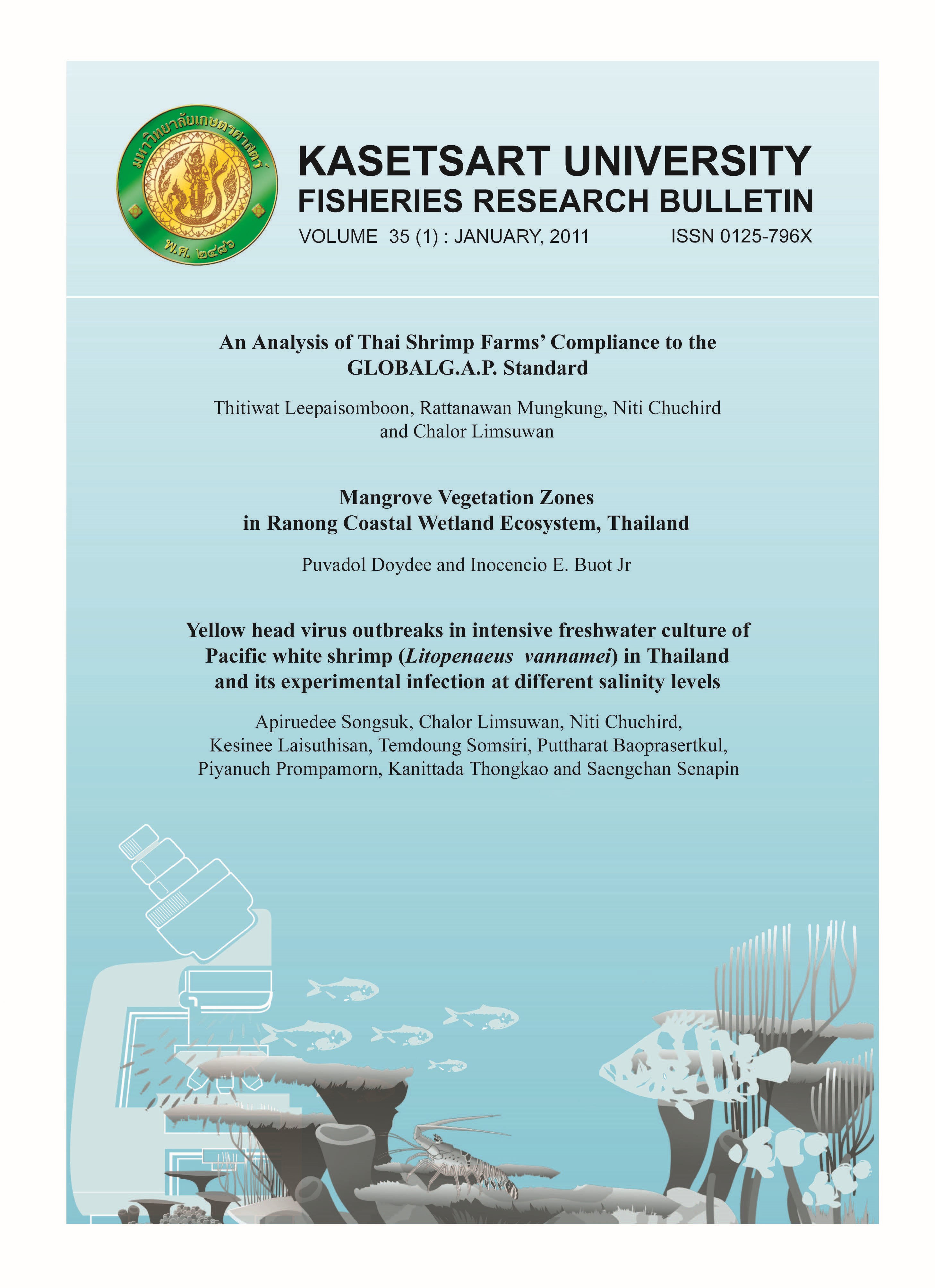An Analysis of Thai Shrimp Farms' Compliance to the GLOBALG.A.P. Standard
Main Article Content
Abstract
This study evaluated the current compliance of Thai shrimp farms to the GLOBALG.A.P. standard (The Global Partnership for Good Agriculture Practices) to identify practical corrective actions and their technical implications. Eighteen shrimp farms in Thailand, representing small/medium, single/group, and inland/coastal farms, were audited against the GLOBALG.A.P. criteria. The results indicated that the farms complied with only half of the criteria, with no significant differences associated with farm size. The level of compliance in the aquaculture base (AB) module (43-63%) was highest, followed by the shrimp species (SP) module (44-56%), the social (SC) module (40-65%), and the all farm (AF) module (17-44%). The major noncompliance areas were in the AF and AB modules. Noncompliance areas in the AF module were related to identifying environmental, risk, safety, health, and hygiene factors with regard to developing plans and procedures (including the emergency/accident plan and procedure) and implementing internal self-assessment and corrective actions. The most critical areas in the AB module were customer complaints and the recall procedure. The key adaptation strategies were developing farm management systems and document control for good practices and implementing activities to educate farmers and associated stakeholders about principles and practices of the GLOBALG.A.P. standard. The introduction of GLOBALG.A.P. standard will help improve product reputation. However, other issues need to be taken into accoun i.e. market demand and price premium to farmers, introduction of contract farming, and the availability of local auditors and certification procedure.

